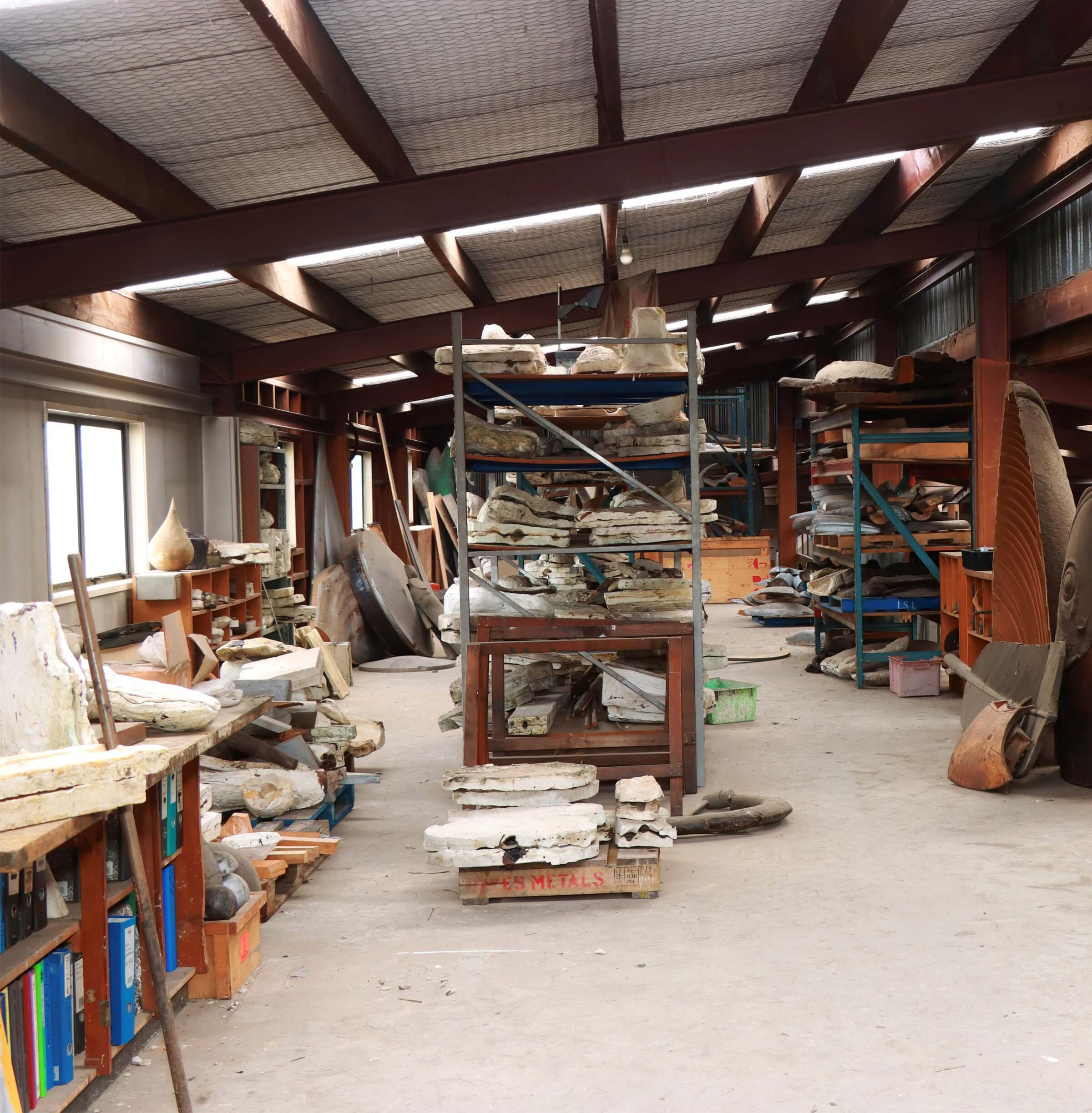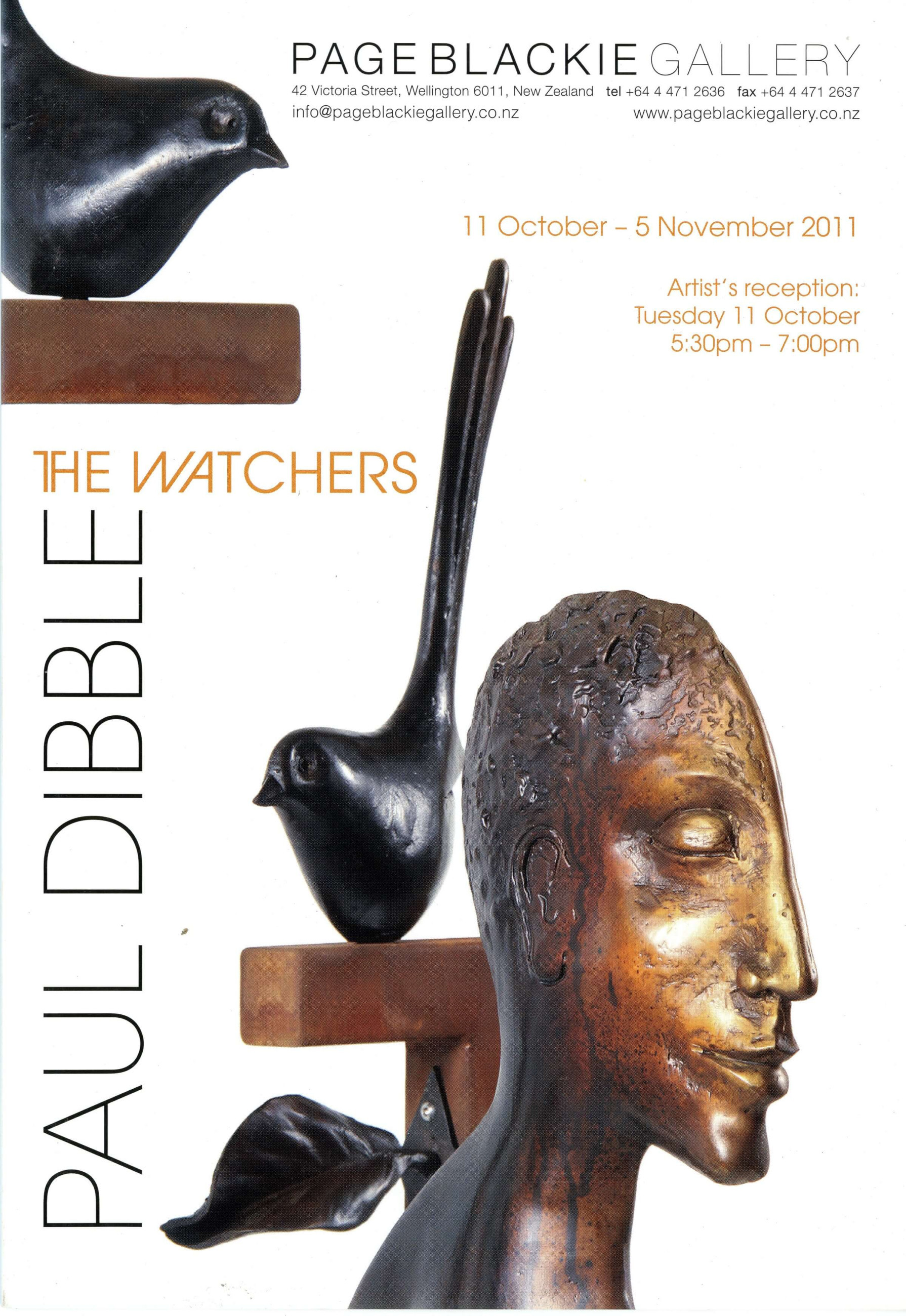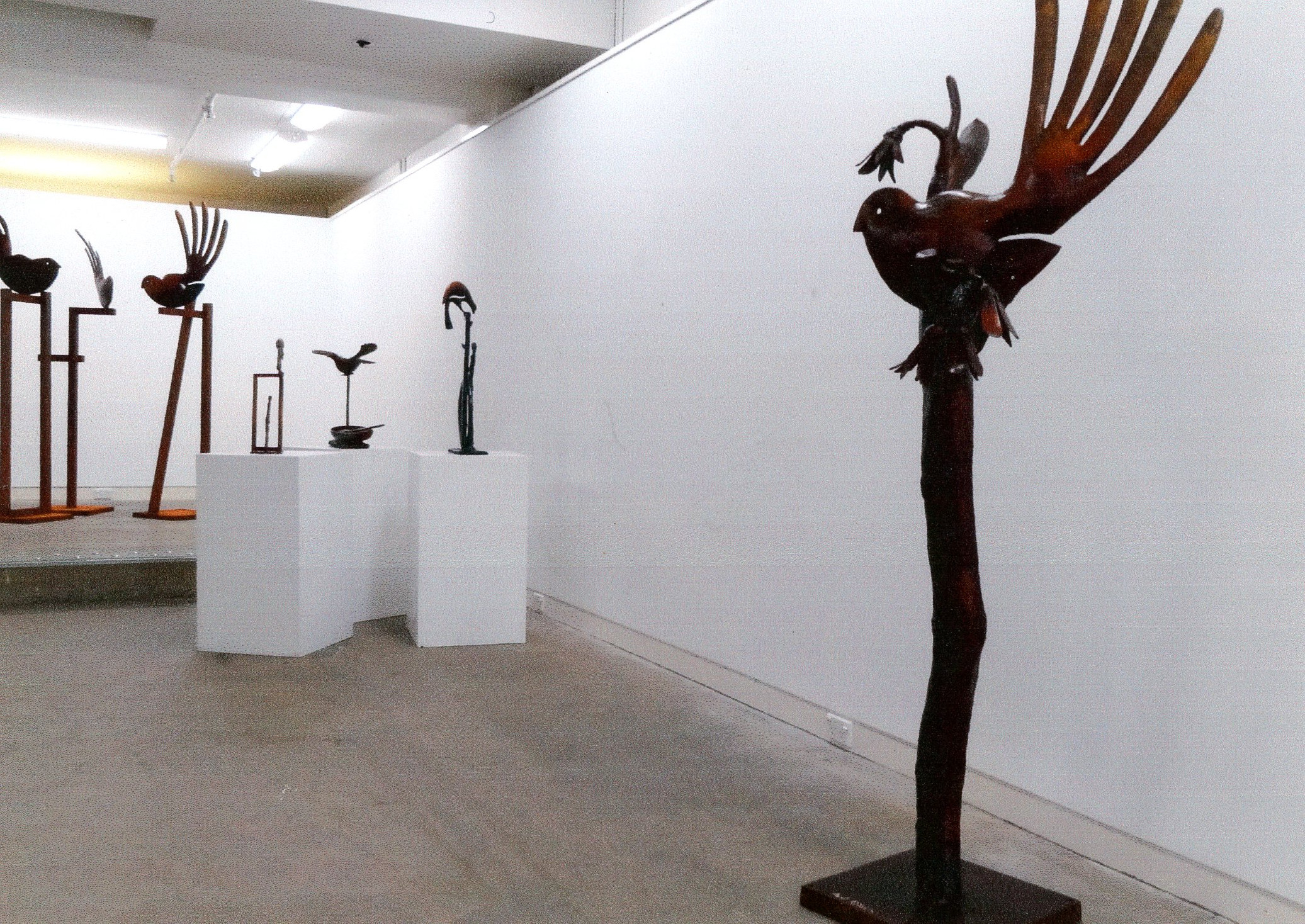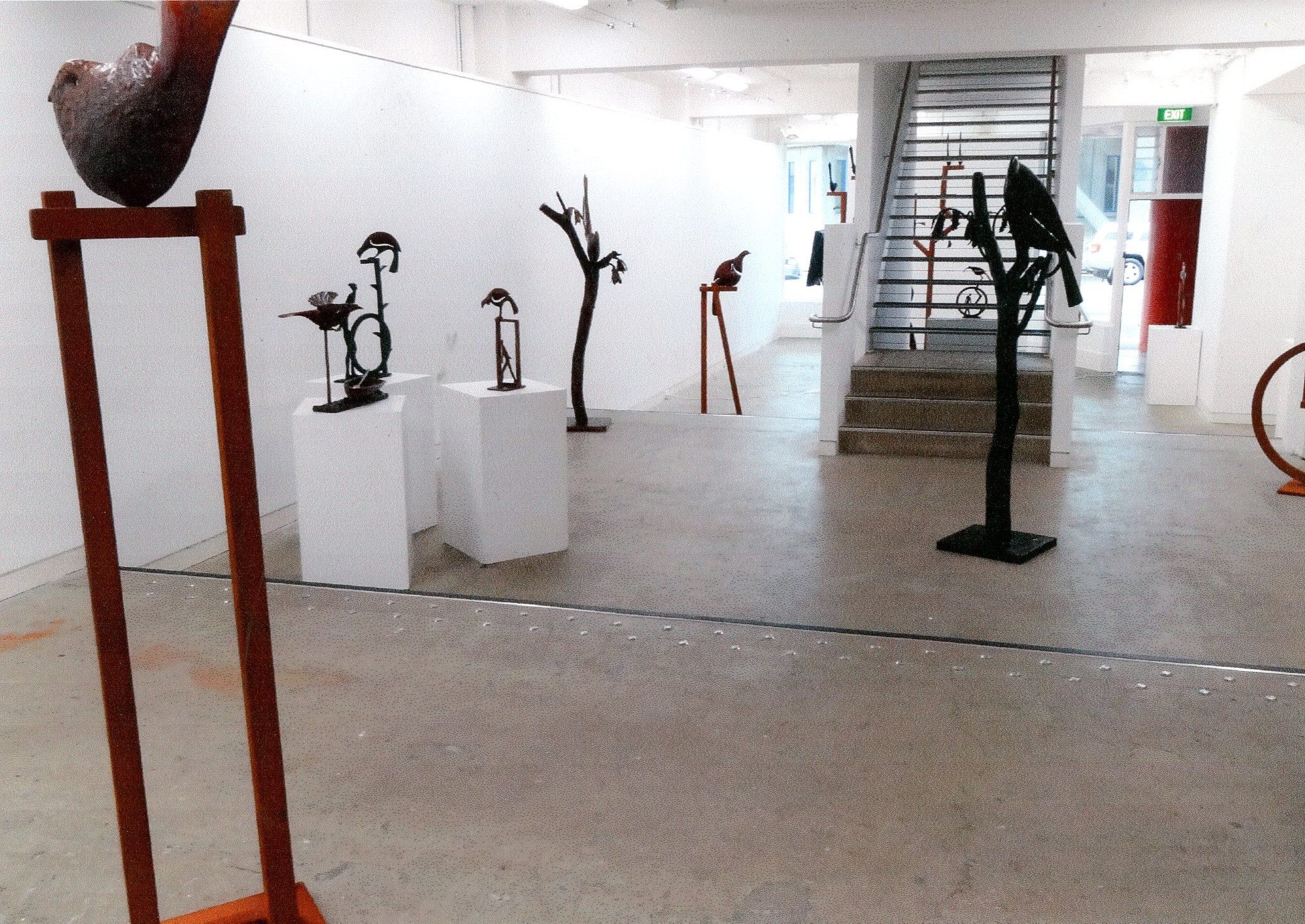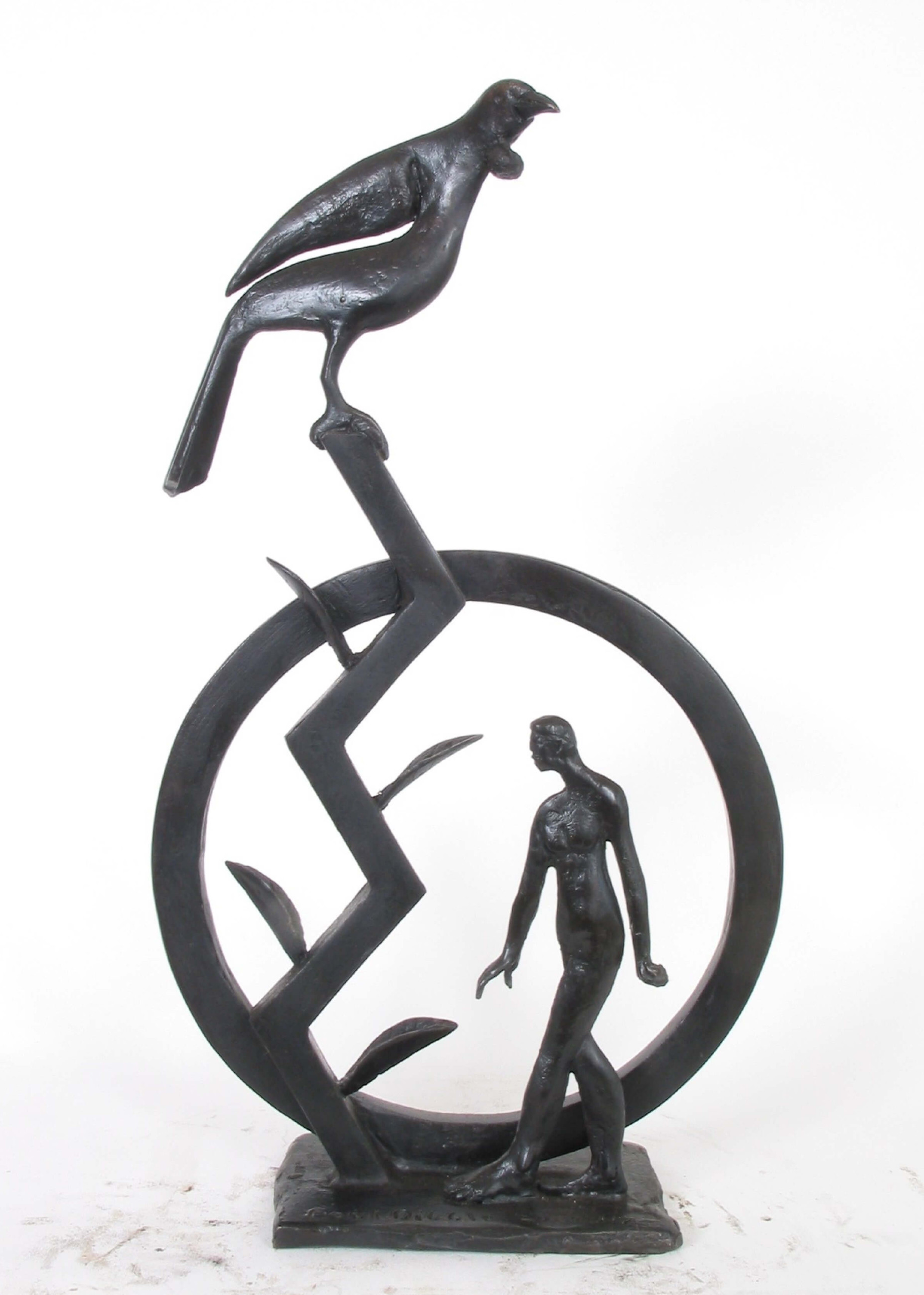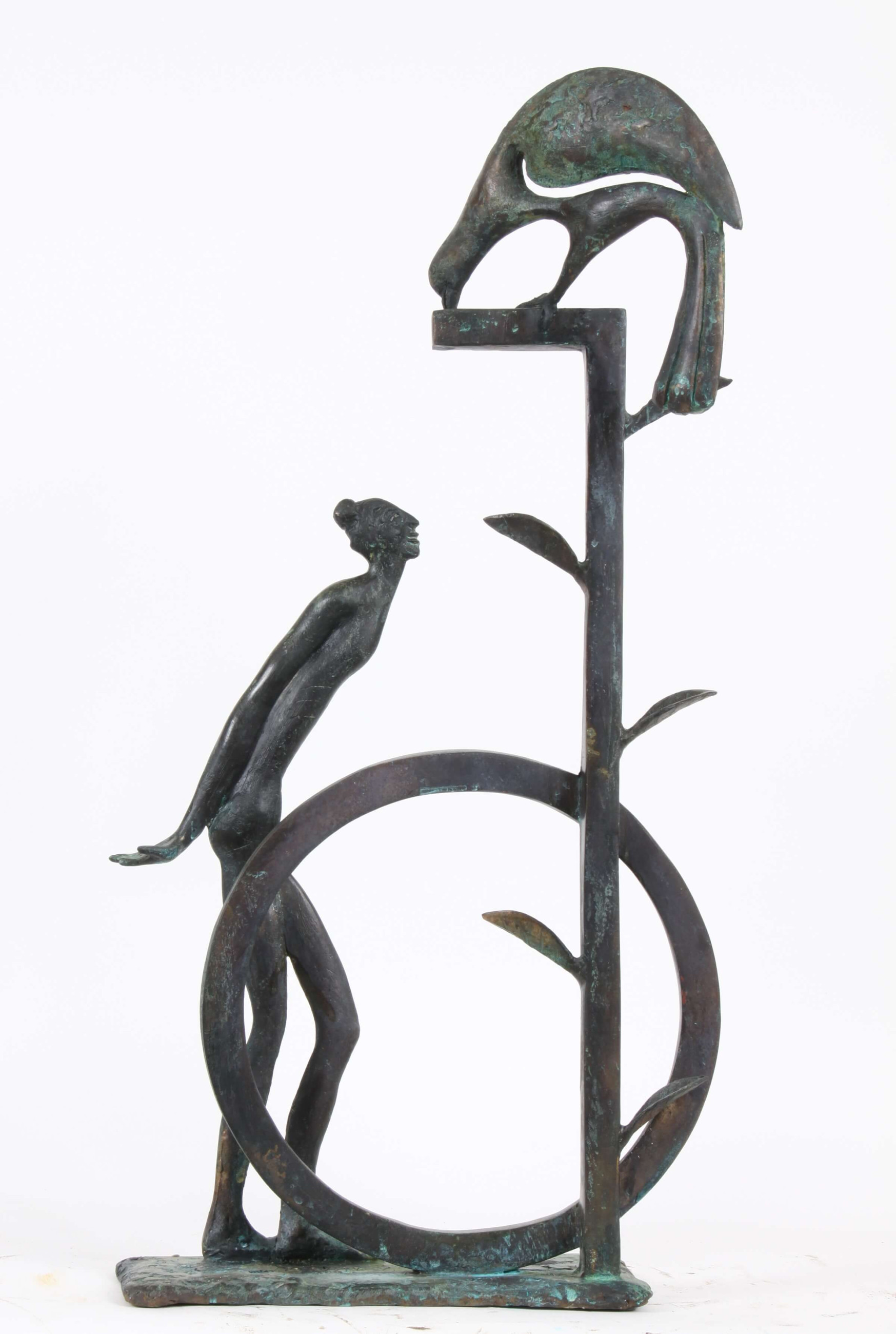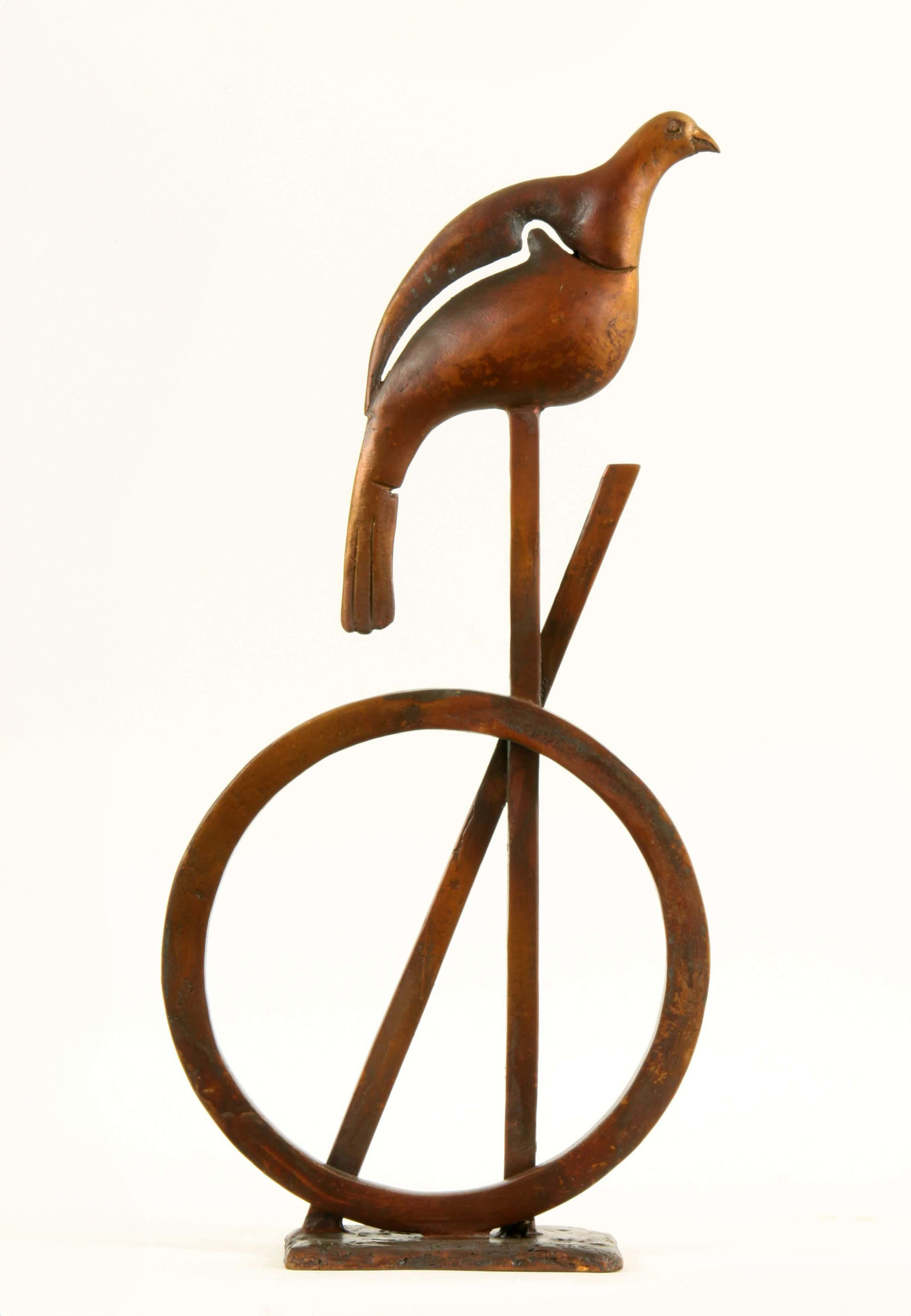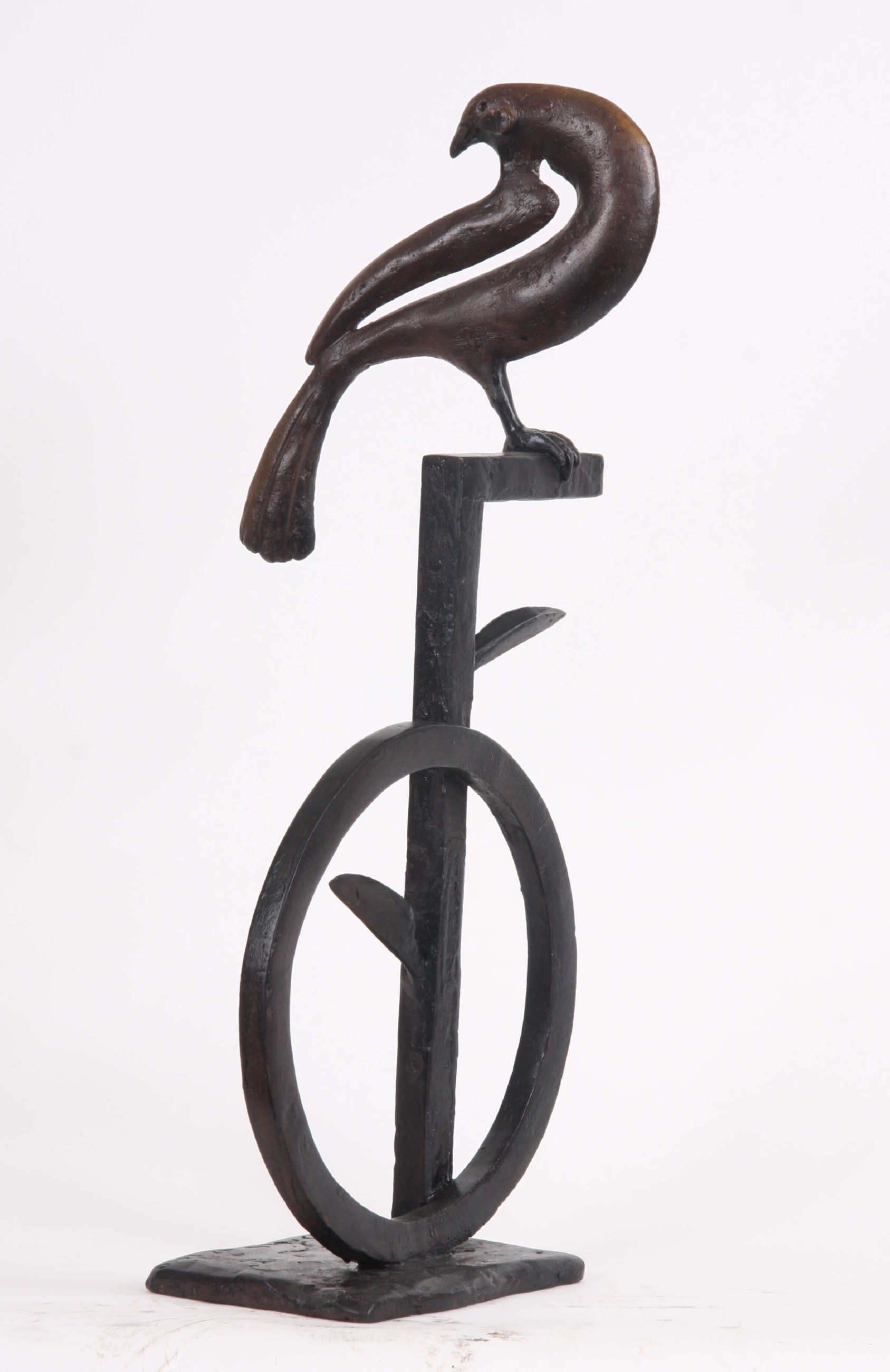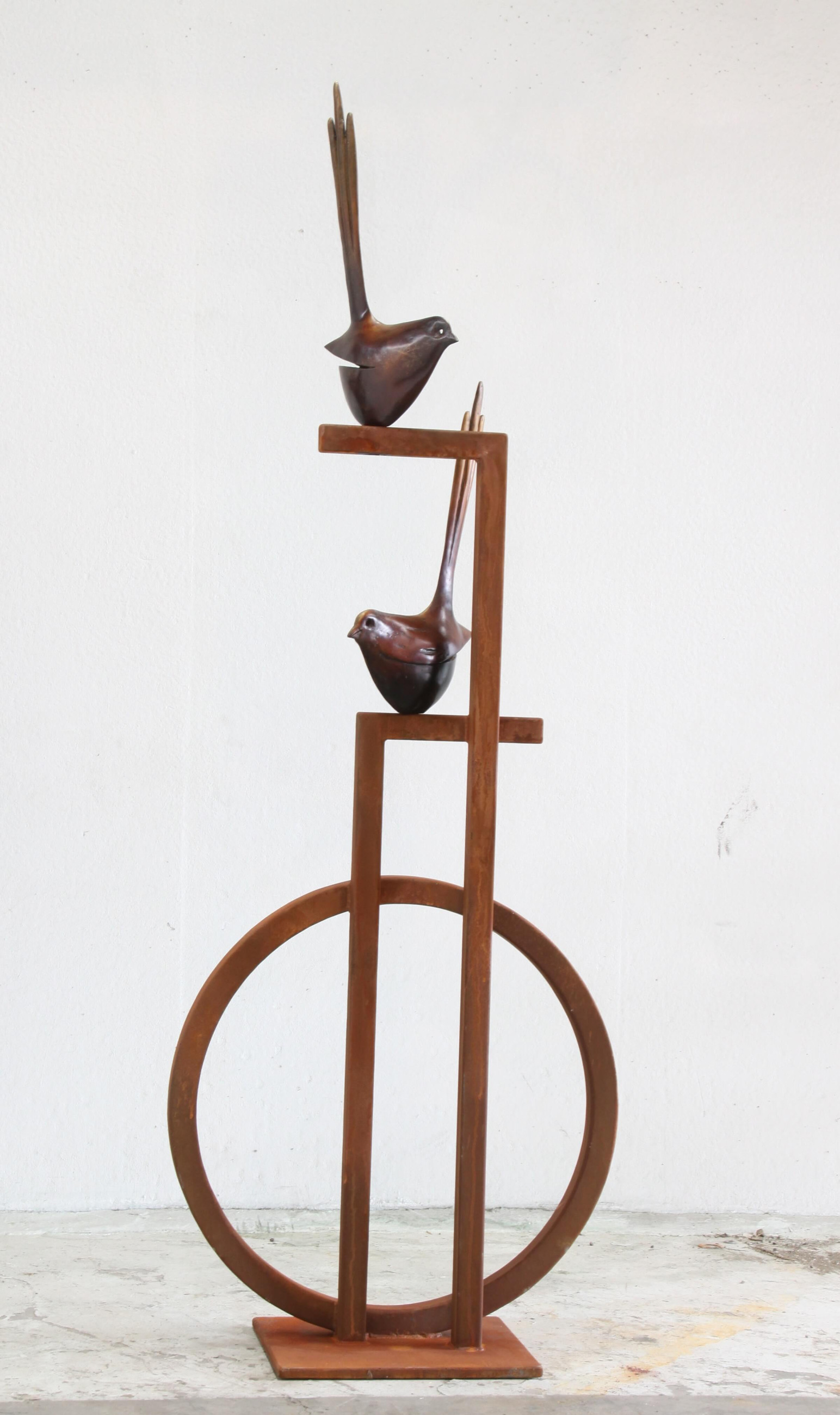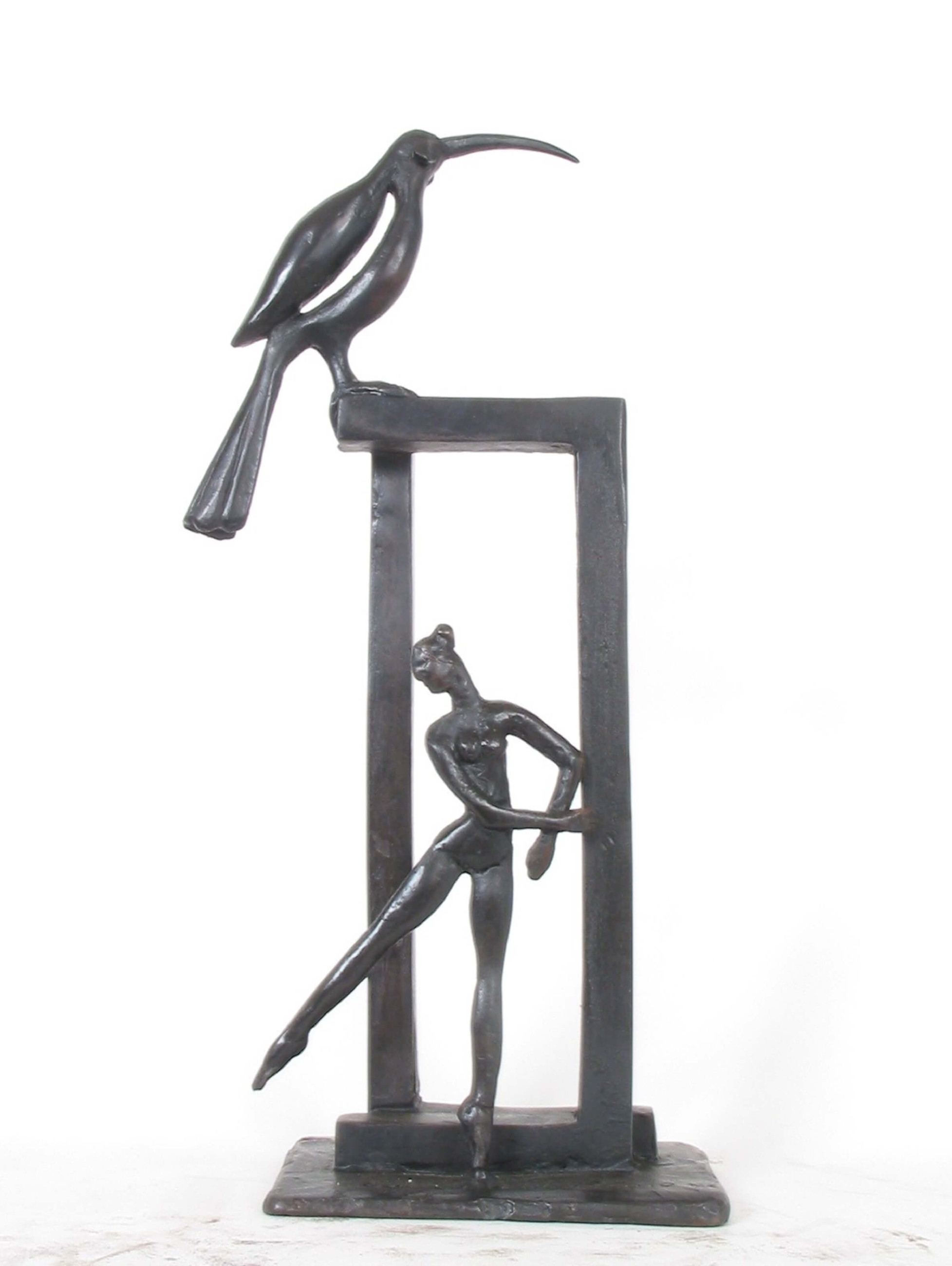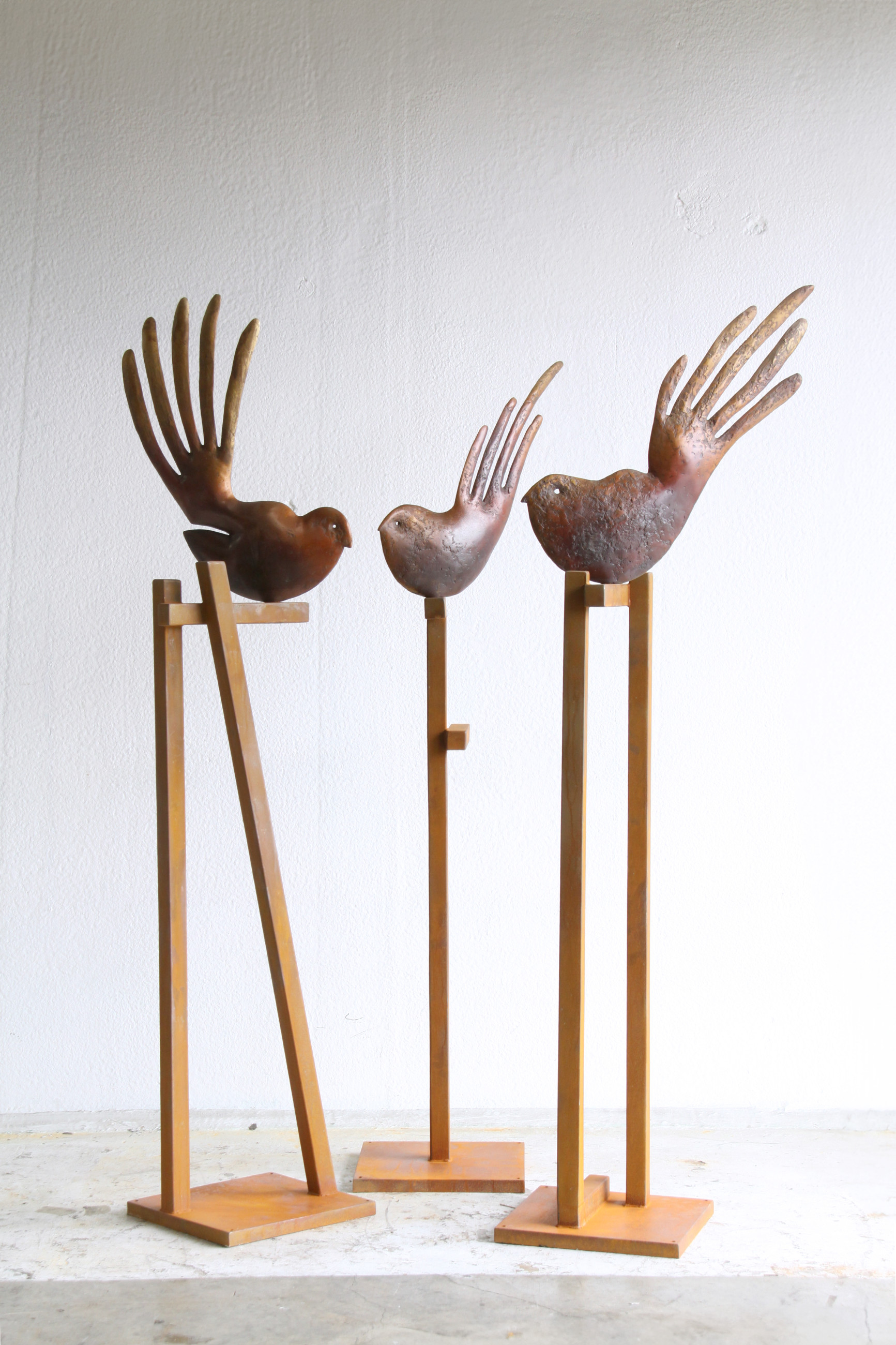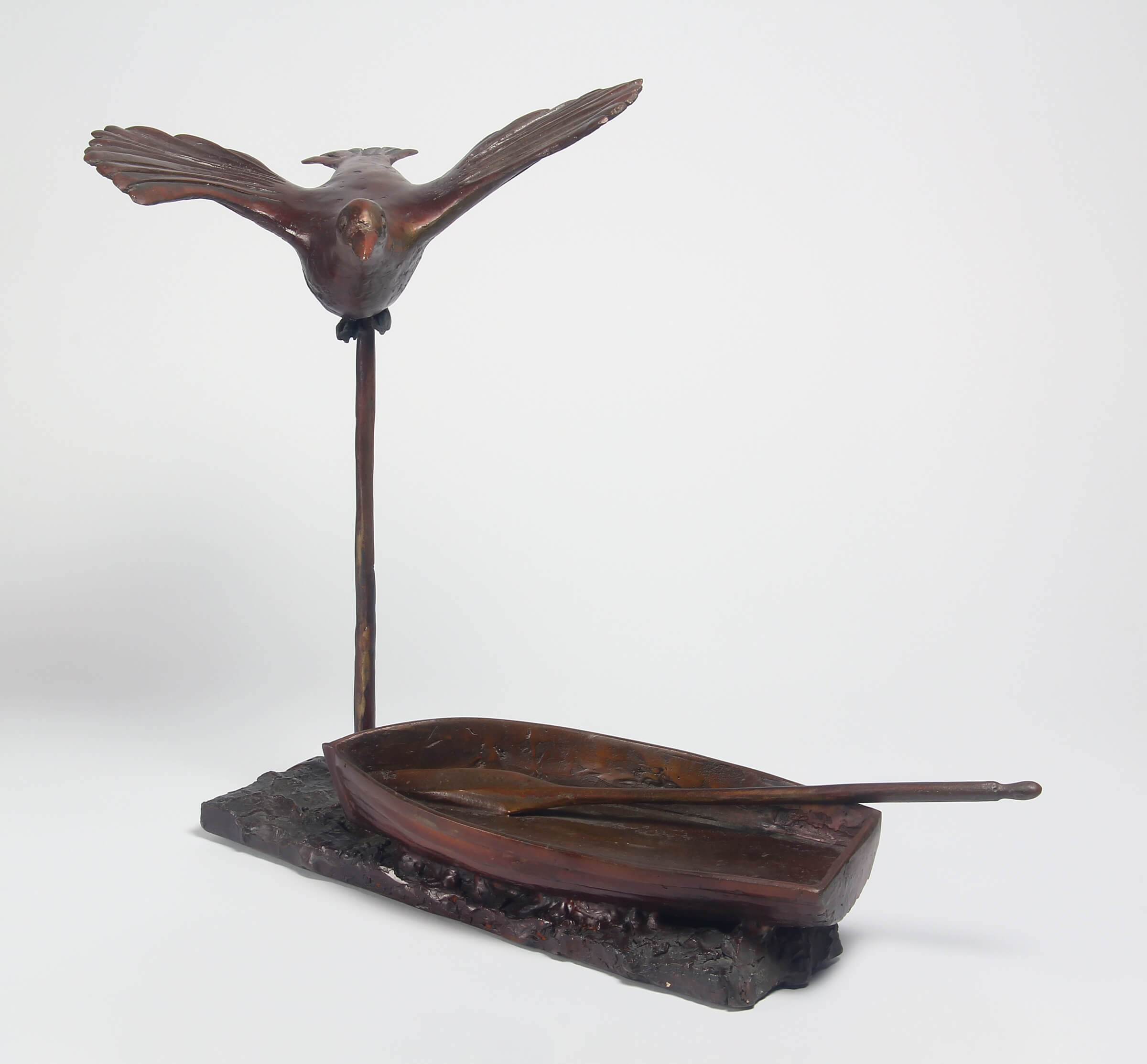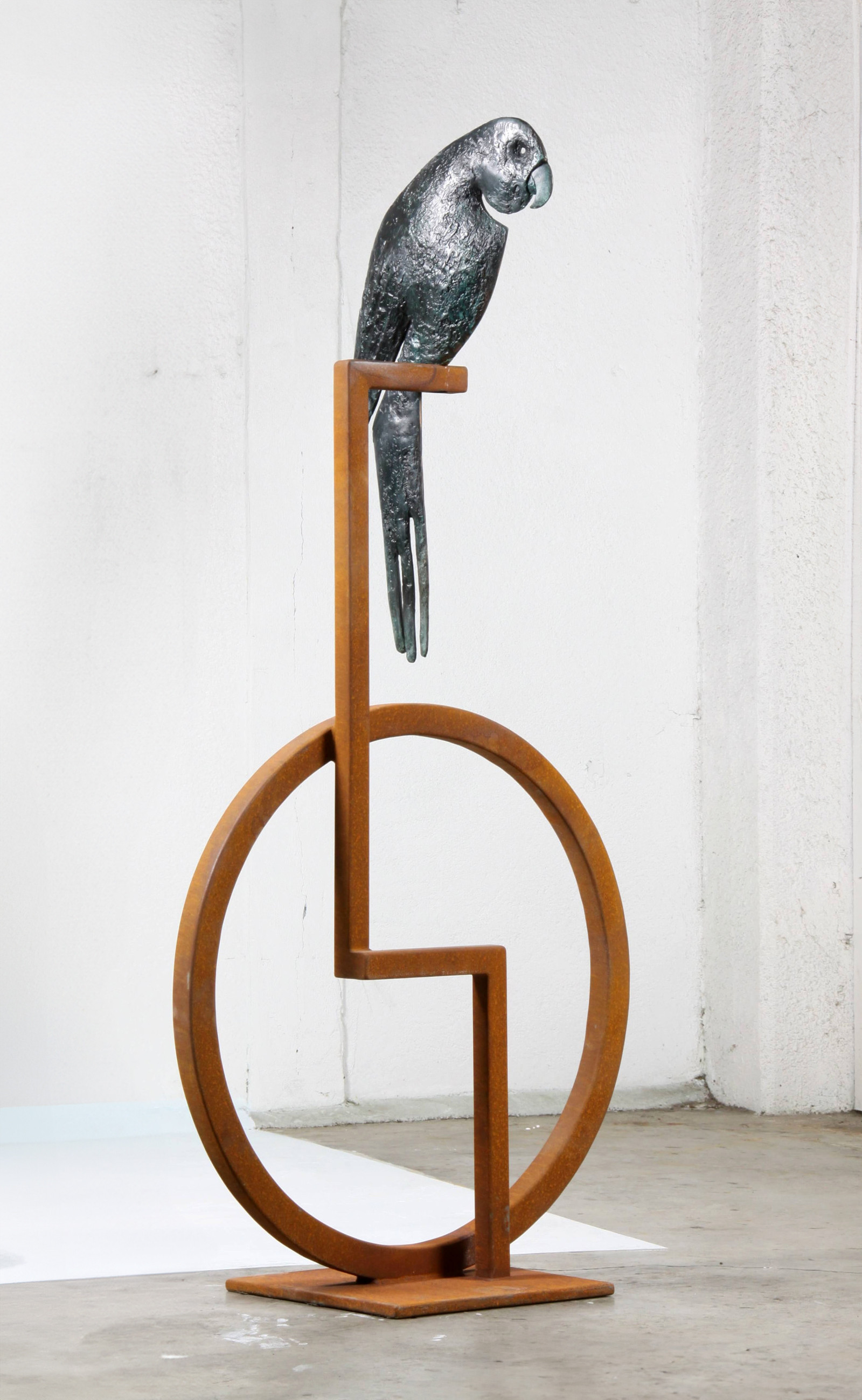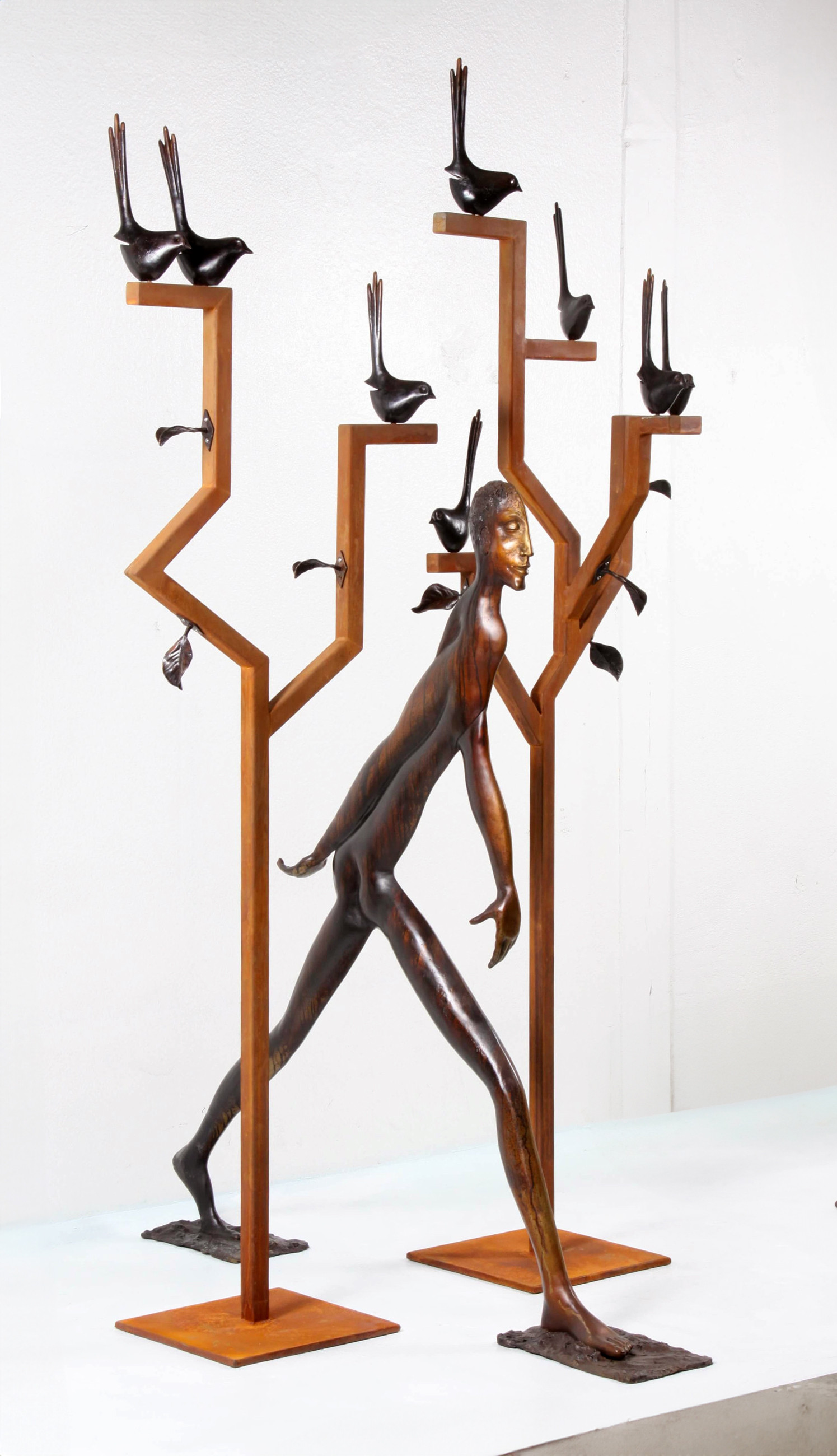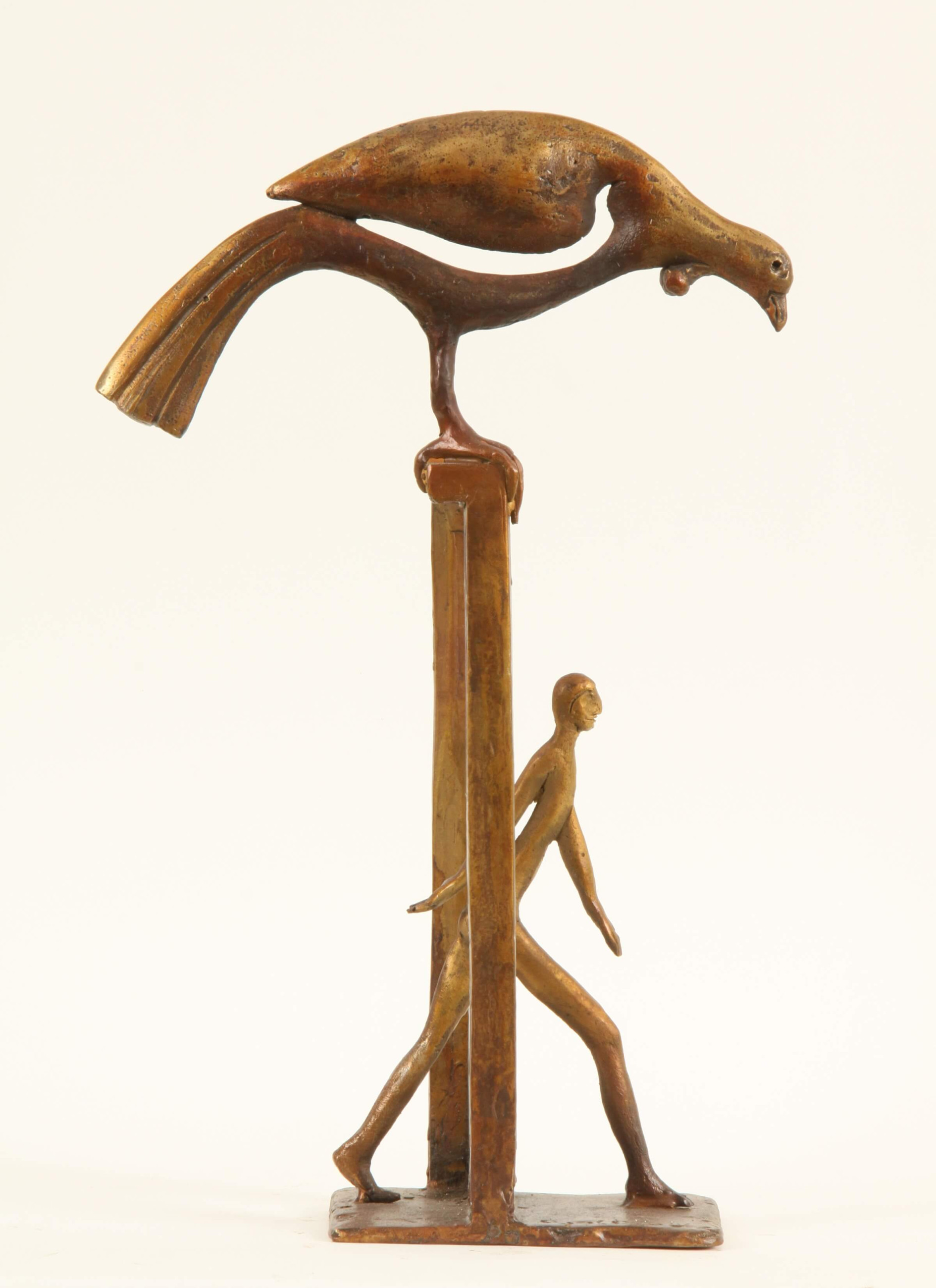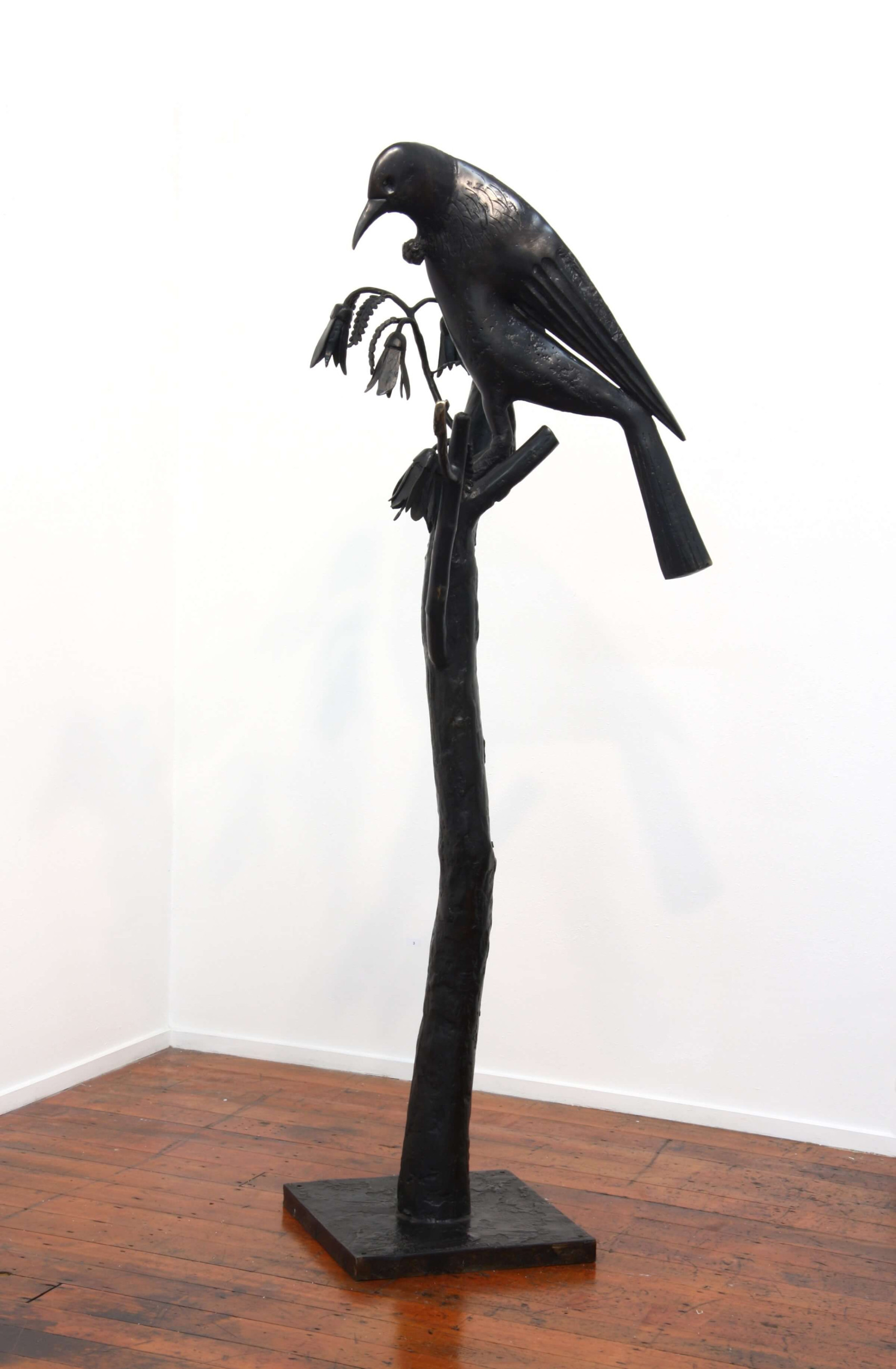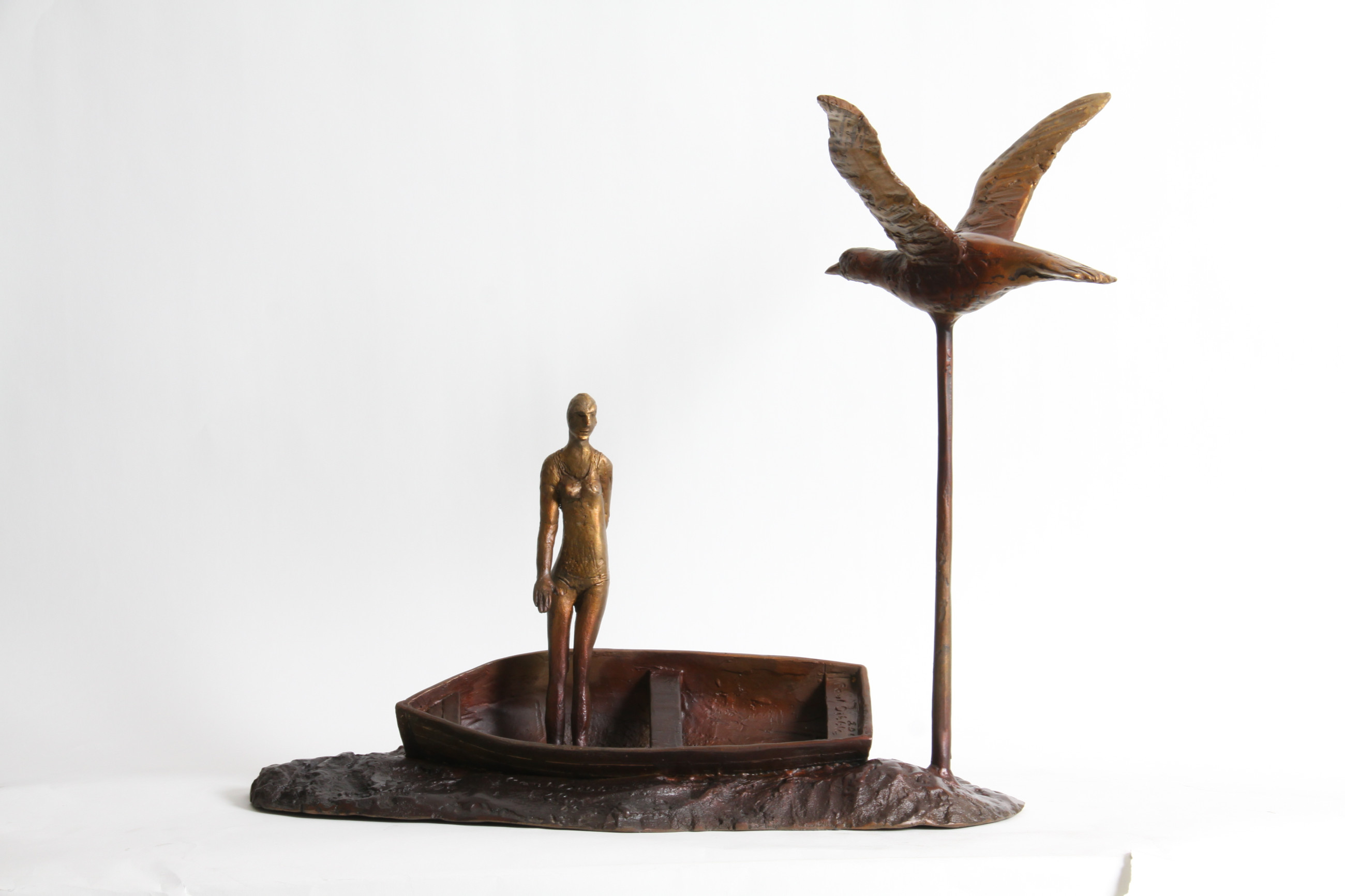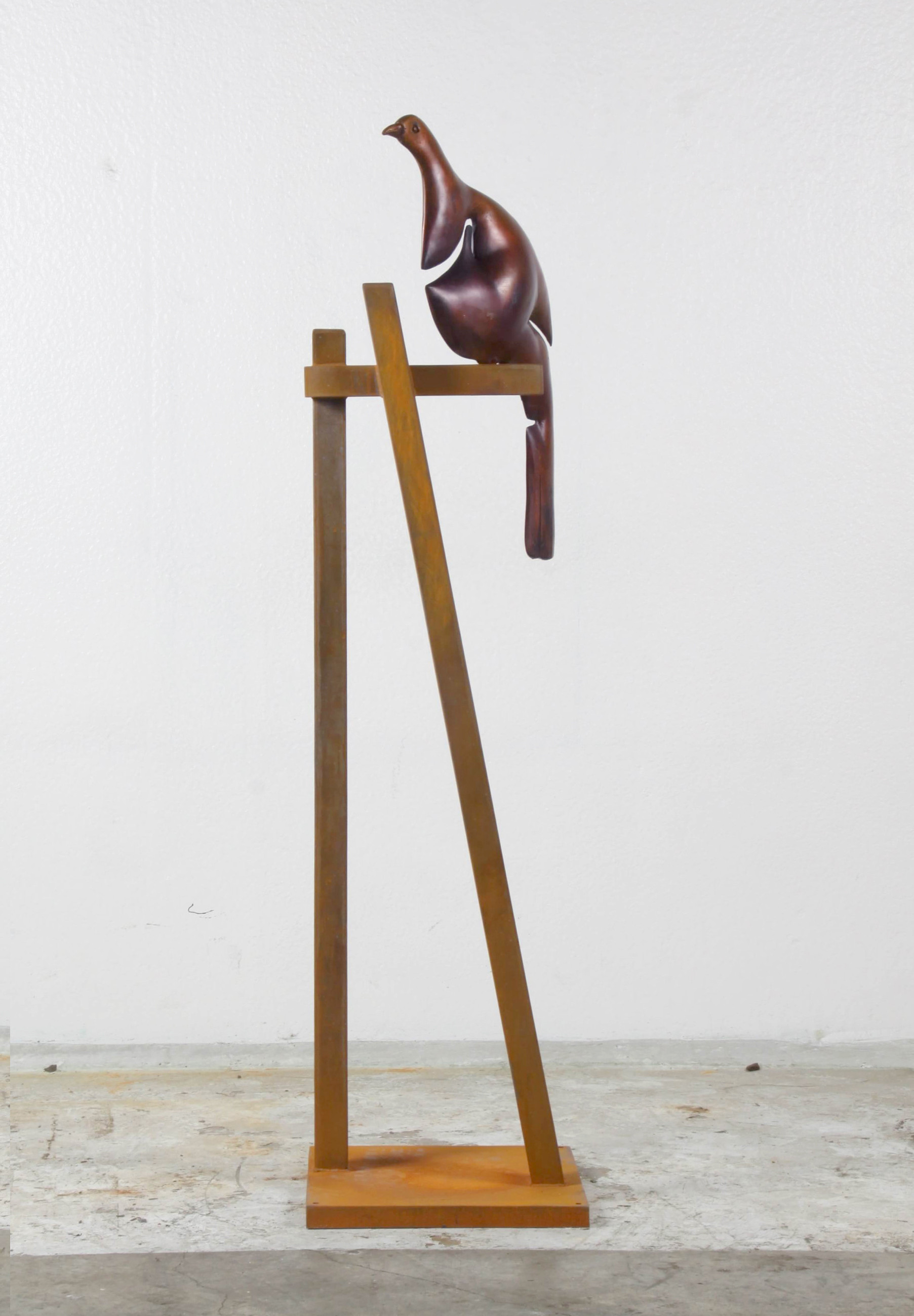October 11 - November 5, 2011 The Watchers
October 11 - November 5, 2011 The WatchersSolo, Page Blackie Gallery, Wellington
Text
They are the unobserved watchers; particularly our birds, so toned-down in colour to blend in the thick filled bush that makes up the New Zealand forest; so on a walk through, you often can’t find them, but still sense that they are there – seeing you. Paul Dibble’s birds, in sculptures, lyrically assembled with their props and leaves seem to place birds in a separate realm to the world we humans inhabit.
Modelled and cast into bronze many of the artworks now incorporate Corten steel in the mix, appearing first in mid 2008, now comfortably included as part of the artist’s practice. It is used to great effect, the squared and manufactured with the flat rust oxidation a perfect foil for the modelled curved shapes of the bronze articles with their spill of patina and shine. It presents a dialogue on many levels, with conversations of just a visual nature where the elegant hand of the maker is grafted onto the straight edged work of construction or, alternately, more grandiose statement intertwining international art movements, the likes of the steel works of Serra and Judd, parrying with local content. There is an irreverent sense that perhaps one of these famous steel works has been strangely planted in the South Seas and the birds have begun to use them to roost.
The birds have made themselves at home portraying their own idiosyncrasies – fantails with their madcap sense of flutter, a native parrot that assumes a slight grin, small birds that perch still but with that sense of being alert, ready to fly off at any moment if danger presents.
It is juxtaposition and contrast; abstracts with semi-realism, hard edged with the sensuous and soft of the swollen shapes. But these depictions play with you, pretending to be much larger rounded forms than they actually are, really they are thin with tapering edges.
The seminal work of the exhibition, The Watchers, has a light airy feel, as if the work has been loosened, and spread intermingled objects that stagger and sidestep one another to fit in synch. A human appearance is made, although he is engrossed, moving forward in an earnest stride and completely unaware of a cloud of birds above looking out. They, on the other hand, seem to be aware that he is there but is of no importance. It is an interaction of man and nature; birds and leaves (the last of the autumn perhaps as they only persist on the bottom branches), and “him”, our primordial Adam, with a tree structure that has been made to measure with right angles and simply drawn branches. This gives the sense of it being very much an urban setting, the protagonist striding off like someone rushing to connect to his next appointment, while the birds are gathered together as if at twilight in the few trees a city offers. The birds are present in numbers, a repetition of small dotted bodies in the stark branches, and it is their view, they are the watchers, that takes the attention of the scene.
